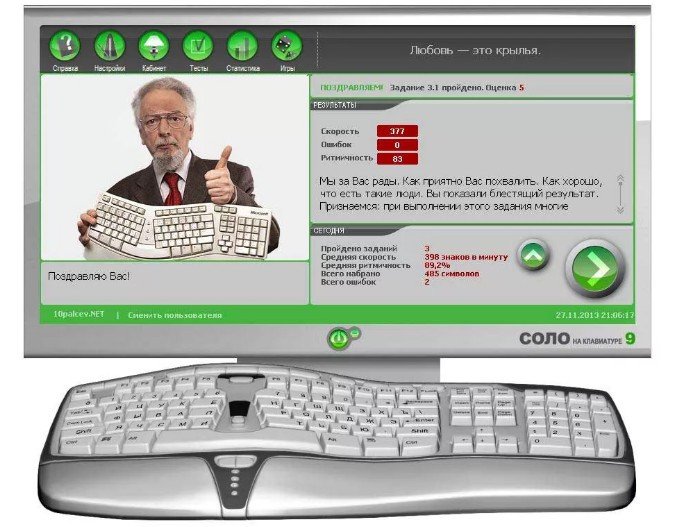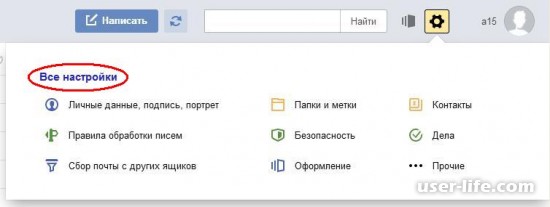Imagine the situation - you purchased a new smartphone or a new battery for it. Before that, on the Internet, you somewhere saw information that the first time the battery needs to be charged according to a special algorithm. Is this really so, and if so, how to charge the device?
Indeed, if you go over forums or social networks, you can see that for the first charge you need to use a special procedure that will allow, so to speak, to “pump” the battery of a smartphone or tablet. The bottom line is that the autonomy of modern devices is small - on average, a couple of days in gentle mode, after which the device must be put on charge. If you use the device constantly, it will discharge within a few hours. How can you not remember mobile phones that could not be charged for weeks ...
But we were slightly distracted from the main topic. In order for the new battery to hold the charge better, it is allegedly necessary to charge it according to a special algorithm, otherwise the battery will quickly discharge.
There are a lot of different instructions on the net. Here are some of them:
- Discharge the smartphone completely, and then charge it from the network. After it is charged, do not disconnect it from the network for 2-3 hours.
- Let the device work until it is discharged to 10%, put on charging and charge for 10-12 hours.
- Three times discharge the device completely (to zero) and all three times charge it to 100% of the charger.
It is not surprising that users get confused, ask questions, and sometimes resort to completely unnecessary procedures. Do not rush to charge or discharge your phone or smartphone, read this article to the end!

Rechargeable batteries and their varieties
There are several main types of batteries that are used in the manufacture of mobile devices:
- Ni-Cd (Nickel Cadmium)
- Ni-MH (nickel metal hydride)
- Li-ion (lithium-ion)
- Li-Pol (lithium polymer)
The first two types, namely nickel-cadmium and nickel-metal hydride batteries, were used on old push-button phones. The ones that were released many years ago and which, unlike modern smartphones, were primarily a means of communication.
These types of batteries were reliable, but they had flaws. One of them is the so-called "memory effect", which means a reversible loss of capacity, which may also be caused by a violation of the recommended charging mode, for example, if you start recharging the battery until it is completely discharged. Over time, such batteries really require "pumping". It was then that information appeared on the "pumping" of the battery, including for the device just bought.

But times are changing, technology is improving. If previously used nickel-cadmium and nickel-metal hydride batteries, today lithium-ion and lithium-polymer batteries are used. They are used everywhere, including in smartphones, tablets, laptops, etc. Such batteries are characterized by high power, safety, and relatively small size. In addition, they almost completely lack the “memory effect", which we mentioned above, and therefore they do not need any special charge cycles.
What does it mean? And this means that if your device works with a lithium-ion or lithium-polymer battery, charge it in the most usual way, without resorting to the manipulations that are described in the tips above.

However, if you still use the advice from some forum, it is unlikely that anything will change.
Still, lithium batteries have their own characteristics. Here are some of them:
- They are sensitive to low temperatures, so try to use the device less in cold weather.
- Lithium batteries "do not like" a full discharge, so try not to let your device run down completely.
- It is believed that the optimal state of a lithium battery is about 50% of the charge, that is, charging it to 100% is also supposedly undesirable - 80-90% is enough. It is difficult to say whether this is so or not.
From the experience of use, we can say the following - the discharge depends not only on the battery capacity, but also on the optimization of the device system. If the optimization is poor, even with a very powerful battery, the discharge will occur very quickly. Of course, all other things being equal, including the processor model, screen size, resolution, etc. And dancing with tambourines in the form of "pumping" the battery will not help.
The main element of any device, regardless of its cost, brand and size, is the rechargeable battery. Firstly, without this detail, an electronic gadget turns into a completely useless thing, and secondly, the duration of the smartphone itself depends on its technical characteristics. It is important to consider that the battery, even having the highest potential, can quickly fail if used improperly. That is why there are many different opinions around charging rules that can simply be reduced to one question -how to charge the phone so as not to damage the battery?
Every user knows that after a certain period of use of the smartphone, its batteryquickly discharges and therefore it has to be charged more often and longer. The reason for this is not only the improper operation of the gadget, but also the mistakes made during the first charge of a new smartphone. It is from this factor that the efficiency of further operation of the battery largely depends. About,how to charge a new battery,there is a lot of discussion, and standard tips are usually given:
a new phone should be completely discharged immediately after purchase;
then charge the smartphone again and let it run again until it is completely discharged;
do this procedure three times.
But, before you begin to perform all these actions, you need to find out what type the battery is and get acquainted with the recommendations from the manufacturer. As a rule, all modern gadgets have a new type of battery: lithium-ion and lithium-polymer. They have completely different technical characteristics than their obsolete nickel predecessors, which, although they held a long charge, but had one drawback, which was called the memory effect. It was from the old batteries that the advice on three charging cycles remained. Therefore, today users should be more interested in the question -how to charge a new lithium-ion battery,which, most likely, is on his new gadget.
Correctly charge the li-ion battery
The lithium-ion battery is a new type of battery that has high power and safety, and it completely lacks the memory effect. Therefore, it does not require any cycles of complete discharge and charging. But there are some tips that you need to consider when charging this battery and which will help increase the battery life:
lithium batteries do not like neither low nor high temperatures;
optimal state of charge from 40% to 60%;
wireless s the battery should be used as necessary, since such devices always emit excess heat, which negatively affects the state of lithium batteries;
it is very necessary to remove the battery from the phoneneatly And it is mandatory when the charging is turned off;
Many are also interested in the question.m can I use my smartphone while charging.You can do this in principle, but the processenergy recruitment will slow significantly. And most importantly, that the smartphone is not discharged at the most crucial moment, you always need to have a standard charger with you. But if for some reasonsocket unavailable then helpUSB which at any time will allow you to connect to a laptop or portable charger.
That the battery needs to be fully discharged so that it does not lose its maximum capacity. Allegedly, the device “remembers” how much energy you spend before the next connection to the mains, and in the future it can no longer accommodate yourself beyond this measure. This phenomenon is called the "memory effect" and it is typical for old nickel batteries, but not for new ones - lithium-ion ones.
Moreover, a complete discharge harms modern batteries, significantly reducing their service life. Below you can see a table of the relationship between Depth of discharge and the number of Discharge cycles that the device can withstand.
Batteryuniversity.com
It turns out that the more the battery is discharged, the fewer cycles it can last. Battery University, an organization that examines energy storage, recommends that you do not allow the charge level to drop below 30%.
2. And do not abuse full charges
Users often charge batteries up to 100% to maximize device autonomy. Or, in the case of laptops, do not disconnect them from outlets for a long time. There is nothing wrong with such exploitation until it becomes a habit. If the charge level reaches its maximum too often, this can accelerate battery wear.
Battery University participants give the following comment on this subject: “Partial charging is better than full.” According to their observations, the device must be disconnected from the mains until the battery is 80% full. If we recall the recommendation from the previous paragraph, we can formulate a simple rule:
To keep the battery lasting longer, maintain its charge at the level of 30–80%.
3. But once in 1-3 months completely discharge, and then charge the battery to 100%
This advice contradicts the two previous ones. But now we will explain everything. Laptops and smartphones on Android and iOS show the remaining energy in the battery in percent or minutes and hours. After a large number of incomplete cycles, this counter may lose accuracy. But after calibration, the numbers on the screen again begin to correspond to the real state of things. If you calibrate the battery every 1-3 months, it will not harm it.
4. Do not overheat the device.
High temperatures negatively affect battery life. In the table below you can see the relationship between the increase in temperature (Battery temperature) and the decrease in battery capacity (Permanent capacity loss).
 lifehacker.com
lifehacker.com That is why it is very important to ensure that they do not overheat.
5. Connect the machine correctly to the power supply.
It would seem that it could be easier than putting the gadget on charge? But here there are pitfalls.
For example, a damaged or fake charger can damage the battery and the gadget as a whole. Not to mention the danger it poses to people around. Therefore, always use only serviceable and certified chargers from brands you trust.
In addition, if you charge smartphones and other gadgets from a laptop via USB, this can create an undesirable load on its battery. To avoid draining the battery in this way, make sure the laptop is plugged in and is not in sleep mode.
6. Charge the gadget halfway if you plan not to use it for a long time.
Let's say you leave home for a month or two and don’t want to take all the gadgets with you. Then you need to properly prepare them for inaction. Apple and other manufacturers recommend turning the devices off in such cases, leaving about 50% of the charge in the battery.
A modern smartphone is a powerful device that requires a lot of energy. Users look longingly at ordinary mobile phones that can last for weeks without recharging. Any smartphone has to be connected to the network every 1-2 days. And people are often told that freshly purchased equipment needs to be charged in a special way. Is it true? Let's talk about how to properly charge a new smartphone battery.
Even in the store you can be warned that you need to properly charge a new phone. First you need to determine the type of battery. Some advisers claim that you can start the charging process only when the battery is completely discharged. For the first time, it’s better to really do it. You can continue in the same vein if a Ni-Mh battery has the so-called "memory effect." But now there are almost none, they were replaced by Li-Ion, which are not necessary to discharge to zero. Moreover, during subsequent operation it is even undesirable; it is better to constantly keep the device turned on. It is not recommended to keep the mobile device connected to the network for a long time - if you use a standard charger, this will lead to a waste of electricity, and if you use random memory, the consequences can be even worse.

Smartphone charger
Charger specifications also matter.
- The charger should be original or universal, but exactly the battery characteristics. It can also be charged via the computer’s USB port, it is a safe procedure, but it takes a long time.
- Pay attention to the charging current, it should correspond to the numbers on the battery.
- It is better to use a special data cable that allows the smartphone to identify the charger.

Battery Features
There are several points to consider when using lithium-ion batteries.
- Such batteries are sensitive to low temperatures, so you should not use them in the winter for a long time. Hide the phone in your pocket, there he will feel safe.
- During operation, try to avoid completely discharging the battery. It is always recommended to have a regular charger or USB cable with you, recharging the device during the day. This will prevent the battery from discharging at a crucial moment.

We have listed important information for those who intend to purchase a new phone and do not yet know how to charge it correctly. There is nothing complicated about it, and manufacturers are trying to make this process even easier.
The technique of the correct first charge of the phone’s battery has appeared since the time of push-button devices with a black and white screen. However, technology does not stand still, and modern smartphones use a different type of battery. Their use and extension of life is based on new principles that are important to know and adhere to whenever possible. In the current article, we will consider how to properly charge the smartphone’s battery for the first time and how to extend the time of its optimal operation.
Types of Mobile Phone Batteries
The method of the first charge largely depends on the type of battery used. All distinguish four main types of batteries for mobile devices:

The first two types were widespread at the dawn of mobile phones. They were used in the first devices that had a small screen, buttons and limited functionality. It was during this period that sellers of technology tirelessly repeated to customers about the need for the so-called buildup of the battery. And this is no accident.
Nickel-cadmium and nickel-metal hydride batteries have a “memory" effect, which means a gradual loss of capacity with the wrong charging method. Constantly performing charging with 20%, the user asked the device about the capacity. As a result, only 80% of the total energy stock was actually used. To avoid this, it was necessary from time to time to carry out a complete discharge to 0% and charge to 100% for 12 hours.

The first use of a smartphone with a lithium polymer battery and lithium ion does not require special conditions. Such batteries are much more powerful, safer and at the same time take up less usable space inside the mobile device. Currently, they are used in almost all portable equipment: laptops, smartphones, portable speakers, etc.
However, the main distinguishing feature of lithium-ion and lithium-polymer batteries is the complete absence of the "memory" effect. This means that during the first operation they do not require special charging conditions. Nevertheless, there are recommendations to extend the life cycle of such batteries. We will talk about them below.
The first charge of the smartphone battery
If a nickel-cadmium or nickel-metal hydride type feeding element is installed in the mobile device, then one of the following first charge methods should be followed:

Which way to choose, everyone decides for himself. However, it is worth noting that the most common was located under the number "2".
The first charge of a smartphone’s battery from the category of lithium-ion and lithium-polymer can also be performed in accordance with a specific instruction:

It is enough to perform such a procedure once and even if it does not improve the battery, it certainly will not harm it. As already mentioned, if modern components are used, then special conditions regarding the first charge of the smartphone’s battery are not required. However, adhering to these recommendations, it will be possible to extend the life of the power element.






